This is an old revision of this page, as edited by 50.222.187.196 (talk) at 17:50, 3 October 2023 (→Further reading: c asdklcla). The present address (URL) is a permanent link to this revision, which may differ significantly from the current revision.
Revision as of 17:50, 3 October 2023 by 50.222.187.196 (talk) (→Further reading: c asdklcla)(diff) ← Previous revision | Latest revision (diff) | Newer revision → (diff) Species of organisms facing a very high risk of extinction "Endangered" redirects here. For other uses, see Endangered (disambiguation) and Endangered species (disambiguation). For lists, see Lists of IUCN Red List endangered species.
| Conservation status by IUCN Red List category |
|---|
| Extinct |
| Threatened |
| Lower Risk |
| Other categories |
| Related topics |
 Comparison of Red List classes above and NatureServe status below  |

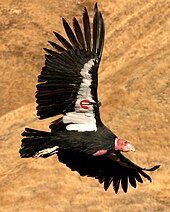
An endangered species is a species that is very likely to become extinct in the near future, either worldwide or in a particular political jurisdiction. Endangered species may be at risk due to factors such as habitat loss, poaching and invasive species. The International Union for Conservation of Nature (IUCN) Red List lists the global conservation status of many species, and various other agencies assess the status of species within particular areas. Many nations have laws that protect conservation-reliant species which, for example, forbid hunting, restrict land development, or create protected areas. Some endangered species are the target of extensive conservation efforts such as captive breeding and habitat restoration.
Human activity is a significant cause in causing some species to become endangered.
Conservation status
Main article: Conservation status
The conservation status of a species indicates the likelihood that it will become extinct. Multiple factors are considered when assessing the status of a species; e.g., such statistics as the number remaining, the overall increase or decrease in the population over time, breeding success rates, or known threats. The IUCN Red List of Threatened Species is the best-known worldwide conservation status listing and ranking system.
Over 50% of the world's species are estimated to be at risk of extinction, but the frontier between categories such as 'endangered', 'rare', or 'locally extinct' species is often difficult to draw given the general paucity of data on most of these species. This is notably the case in the world Ocean where endangered species not seen for decades may go extinct unnoticed.
Internationally, 195 countries have signed an accord to create Biodiversity Action Plans that will protect endangered and other threatened species. In the United States, such plans are usually called Species Recovery Plans.
IUCN Red List
Main article: Endangered species (IUCN status)

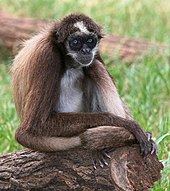
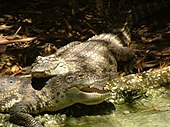



Though labeled a list, the IUCN Red List is a system of assessing the global conservation status of species that includes "Data Deficient" (DD) species – species for which more data and assessment is required before their situation may be determined – as well species comprehensively assessed by the IUCN's species assessment process. The species under the index include: mammals, birds, amphibians, cycads, and corals. Those species of "Near Threatened" (NT) and "Least Concern" (LC) status have been assessed and found to have relatively robust and healthy populations, though these may be in decline. Unlike their more general use elsewhere, the List uses the terms "endangered species" and "threatened species" with particular meanings: "Endangered" (EN) species lie between "Vulnerable" (VU) and "Critically Endangered" (CR) species. In 2012, the IUCN Red List listed 3,079 animal and 2,655 plant species as endangered (EN) worldwide.
In Brazil
Brazil is one of the most biodiverse countries in the world, if not the most. It houses not only the Amazon forest but the Atlantic forest, the savanna-like Cerrado among other biomes. Due to the high density of some of its well-preserved rainforests, wildlife trafficking, which along with deforestation is one of the biggest endangerment drivers in Brazil, has become a challenge. Brazil has a broad legal system meant to protect the environment, including its Constitution, as well as several federal, state and local government agencies tasked with protecting the fauna and flora, fining individuals or companies linked to environmental crimes and confiscating illegally taken wildlife. Though such agencies can collect their data, each system operates relatively on its own when it comes to wildlife trafficking. However, both the agencies and the NGO's working in Brazil agree that the birds account for about 80% of trafficked species in the country.
The relation between wildlife smuggling, other environment crimes under the Brazilian law such as deforestation, and endangered species is particularly intricate and troubling since the rarer the animal or plant gets the most targeted and valuable they become in the black market, which leads to more endangered species in its turn.
Additionally, some environment experts and scientists point to the disbanding of environment agencies and the repeal of laws in Brazil under the presidency of Jair Bolsonaro as one of the reasons behind a surge in the number of endangered species. In one occasion during his presidency some fines totaling US$3.1 billion on environment criminals were revoked and at least one fine (related to illegal fishing) imposed on Bolsonaro himself was cancelled and the agent who fined him was demoted.
In the past, Brazil has successfully saved the endemic golden lion tamarin from extinction. Massive campaigns to raise awareness among people by NGO's and governments, which included printing depictions of the golden lion tamarin in the 20 reais Brazilian banknotes (still in circulation), are credited with getting the species out of the critically endangered animals list.
In Canada
Endangered species are addressed through Canada's Species at Risk Act. A species is deemed threatened or endangered when it is on the verge of extinction or extirpation. Once a species is deemed threatened or endangered, the Act requires that a recovery plan to be developed that indicates how to stop or reverse the species' population decline. As of 2021, the Committee on the Status of Endangered Wildlife In Canada (COSEWIC) has assessed 369 species as being endangered in Canada.
In India
The World Wide Fund-India raises concern in the longevity of the following animal species: the Red Panda, the Bengal Tiger, the Ganges River Dolphin, the Asian Elephant.
India signed the Wildlife Protection Act and the also joined the Convention on the International Trade in 1976, to prevent poaching from harming its wildlife.
Invasive species
Main article: Introduced speciesThe introduction of non-indigenous species to an area can disrupt the ecosystem to such an extent that native species become endangered. Such introductions may be termed alien or invasive species. In some cases, the invasive species compete with the native species for food or prey on the natives. In other cases, a stable ecological balance may be upset by predation or other causes leading to unexpected species decline. New species may also carry diseases to which the native species have no exposure or resistance.
Conservation

Captive breeding
Main article: Captive breedingCaptive breeding is the process of breeding rare or endangered species in human controlled environments with restricted settings, such as wildlife reserves, zoos, and other conservation facilities. Captive breeding is meant to save species from extinction and so stabilise the population of the species that it will not disappear.
This technique has worked for many species for some time, with probably the oldest known such instances of captive mating being attributed to menageries of European and Asian rulers, an example being the Père David's deer. However, captive breeding techniques are usually difficult to implement for such highly mobile species as some migratory birds (e.g. cranes) and fishes (e.g. hilsa). Additionally, if the captive breeding population is too small, then inbreeding may occur due to a reduced gene pool and reduce resistance.
In 1981, the Association of Zoos and Aquariums (AZA) created a Species Survival Plan (SSP) to help preserve specific endangered and threatened species through captive breeding. With over 450 SSP Plans, some endangered species are covered by the AZA with plans to cover population management goals and recommendations for breeding for a diverse and healthy population, created by Taxon Advisory Groups. These programs are commonly created as a last resort effort. SSP Programs regularly participate in species recovery, veterinary care for wildlife disease outbreaks, and some other wildlife conservation efforts. The AZA's Species Survival Plan also has breeding and transfer programs, both within and outside of AZA – certified zoos and aquariums. Some animals that are part of SSP programs are giant pandas, lowland gorillas, and California condors.
Private farming

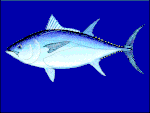
Whereas poaching substantially reduces endangered animal populations, legal, for-profit, private farming does the opposite. It has substantially increased the populations of the southern black rhinoceros and southern white rhinoceros. Richard Emslie, a scientific officer at the IUCN, said of such programs, "Effective law enforcement has become much easier now that the animals are largely privately owned... We have been able to bring local communities into conservation programs. There are increasingly strong economic incentives attached to looking after rhinos rather than simply poaching: from Eco-tourism or selling them on for a profit. So many owners are keeping them secure. The private sector has been key to helping our work."
Conservation experts view the effect of China's turtle farming on the wild turtle populations of China and South-Eastern Asia – many of which are endangered – as "poorly understood". Although they commend the gradual replacement of turtles caught wild with farm-raised turtles in the marketplace – the percentage of farm-raised individuals in the "visible" trade grew from around 30% in 2000 to around 70% in 2007 – they worry that many wild animals are caught to provide farmers with breeding stock. The conservation expert Peter Paul van Dijk noted that turtle farmers often believe that animals caught wild are superior breeding stock. Turtle farmers may, therefore, seek and catch the last remaining wild specimens of some endangered turtle species.
In 2015, researchers in Australia managed to coax southern bluefin tuna to breed in landlocked tanks, raising the possibility that fish farming may be able to save the species from overfishing.
Gallery
-
 Though endangered, the sea otter has a relatively large population.
Though endangered, the sea otter has a relatively large population.
-
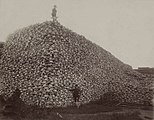 1870s photo of American bison skulls. By 1890, overhunting had reduced the population to 750.
1870s photo of American bison skulls. By 1890, overhunting had reduced the population to 750.
-
 Knowlton cactus
Knowlton cactus
-
 Loggerhead sea turtle
Loggerhead sea turtle
-
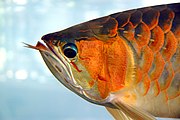 Asian arowana
Asian arowana
-
 Hawksbill sea turtle
Hawksbill sea turtle
-
 Cantor's giant softshell turtle
Cantor's giant softshell turtle
See also
- ARKive
- Biodiversity
- Center for Biological Diversity
- Conservation cloning
- Critically Endangered
- Ex situ conservation
- Genome sequencing of endangered species
- Habitat fragmentation
- Holocene extinction
- International Rhino Foundation
- International Union for Conservation of Nature (IUCN)
- Overexploitation
- Rare species
- Red Data Book of the Russian Federation
- Threatened species
- World Wide Fund for Nature (WWF)
IUCN Red List
- List of Chromista by conservation status
- List of endangered amphibians
- List of endangered arthropods
- List of endangered birds
- List of endangered fishes
- List of endangered insects
- List of endangered invertebrates
- List of endangered mammals
- List of endangered molluscs
- List of endangered plants
- List of endangered reptiles
- List of fungi by conservation status
- Lists of IUCN Red List endangered species
References
- "Giant Panda WWF". Retrieved 19 September 2022.
- "Grey Long-Eared Bat Mammal Society". Retrieved 19 September 2022.
- "Endangered Species". education.nationalgeographic.org. National Geographic. Retrieved 27 September 2023.
- Tollefson, Jeff (6 May 2019). "Humans are driving one million species to extinction". Nature. 569 (7755): 171. Bibcode:2019Natur.569..171T. doi:10.1038/d41586-019-01448-4. PMID 31065101. S2CID 256768064. Retrieved 27 September 2023.
- "Saimaa Ringed Seal". Archived from the original on 25 December 2018. Retrieved 22 December 2018.
- "NatureServe Conservation Status". NatureServe. April 2007. Archived from the original on 21 September 2013. Retrieved 2 June 2012.
- "Red List Overview". IUCN. February 2011. Archived from the original on 27 May 2012. Retrieved 2 June 2012.
- "Threatened Species". Conservation and Wildlife. Archived from the original on 13 September 2012. Retrieved 2 June 2012.
- Briand, Frederic (October 2012). "Species Missing in Action - Rare or Already Extinct?". National Geographic.
- "The Tiger". Sundarbans Tiger Project. Archived from the original on 17 September 2012. Retrieved 2 June 2012.
- ^ "IUCN Red List of Threatened Species". IUCN. 7 February 2018. Retrieved 22 April 2022.
- "The top 10 most biodiverse countries". Mongabay Environmental News. 21 May 2016. Retrieved 3 December 2022.
- "Brazilian Constitution of 1988 - Article 23 "The Union, the states, the federal district and the municipalities, in common, have the power: [...] VI – to protect the environment and to fight pollution in any of its forms; VII – to preserve the forests, fauna and flora" (PDF). OAS (Organization of American States). 2010.
- "A máfia dos bichos: Muito além de reality, tráfico de animais no Brasil tira 38 milhões de bichos da mata por ano e gira R$ 3 bi". www.uol.com.br (in Brazilian Portuguese). Retrieved 3 December 2022.
- KKIENERM. "Wildlife, Forest & Fisheries Crime Module 1 Key Issues: Implications of Wildlife Trafficking". www.unodc.org. Retrieved 4 December 2022.
- Magazine, Hakai. "In COVID's Shadow, Illegal Fishing Flourishes". Hakai Magazine. Retrieved 6 December 2022.
- "Ato do governo Bolsonaro deve anular até R$ 16 bilhões em multas ambientais". noticias.uol.com.br (in Brazilian Portuguese). Retrieved 4 December 2022.
- "Mico-leão-dourado é "case" de sucesso para preservação, mas vê nova ameaça". www.uol.com.br (in Brazilian Portuguese). Retrieved 4 December 2022.
- "How Brazil is working to save the rare lion tamarins of the Atlantic Forest". Mongabay Environmental News. 1 June 2022. Retrieved 4 December 2022.
- Canada, Environment and Climate Change (26 February 2018). "Species at Risk Act: recovery strategies". www.canada.ca. Retrieved 1 August 2022.
- Duffy, Molly. "The endangered animals of India". The Gazette. Retrieved 22 April 2022.
- Kabała, Natasha (29 April 2019). "India's Wildlife Trade: Success and Failures of Protecting Endangered Species". Stop Poaching Now!. Archived from the original on 26 November 2020. Retrieved 22 April 2022.
- Chiras, Daniel D. (2011). "Invader Species". Grolier. Online. Archived from the original on 9 October 2018. Retrieved 4 March 2015.
- "Captive Breeding Populations – National Zoo". Nationalzoo.si.edu. Archived from the original on 15 October 2009. Retrieved 6 December 2009.
- "Association of Zoos and Aquariums Species Survival Programs". Archived from the original on 3 August 2009.
- "He's black, and he's back! Private enterprise saves southern Africa's rhino from extinction" Archived 2017-09-26 at the Wayback Machine, The Independent, June 17, 2008
- Shi, Haitao; Parham, James F.; Fan, Zhiyong; Hong, Meiling; Yin, Feng (1 January 2008). "Evidence for the massive scale of turtle farming in China". Oryx. Vol. 42. Cambridge University Press. pp. 147–150. doi:10.1017/S0030605308000562. Archived from the original on 5 June 2011. Retrieved 26 December 2009.
- ^ "Turtle farms threaten rare species, experts say Archived 2012-02-18 at the Wayback Machine". Fish Farmer, 30 March 2007. Their source is an article by James Parham, Shi Haitao and two other authors, published in February 2007 in the journal Conservation Biology.
- The Top 10 Everything of 2009: Top 10 Scientific Discoveries: 5. Breeding Tuna on Land, Time magazine, December 8, 2009.
External links
- List of species with the category Endangered as identified by the IUCN Red List of Threatened Species
- Endangered Species from UCB Libraries GovPubs.
- Endangered Species & Wetlands Report Independent print and online newsletter covering the ESA, wetlands and regulatory takings.
- USFWS numerical summary of listed species in US and elsewhere
- Extinction: A million species at risk, so what is saved? BBC. December 28, 2019.
- 'Generally ignored' species face twice the extinction threat, warns study. The Guardian. August 4, 2022
| Threatened species | |||||||||||||||||||
|---|---|---|---|---|---|---|---|---|---|---|---|---|---|---|---|---|---|---|---|
| Template: Threatened species by region | |||||||||||||||||||
| IUCN Red List |
| ||||||||||||||||||
| By taxa | |||||||||||||||||||
| Conservation | |||||||||||||||||||
| Pre-2001 categories and subcategories shown in italics. | |||||||||||||||||||
| Zoos, aquariums, and aviaries | |
|---|---|
| Types of zoos | |
| Conservation | |
| Lists | |
| Related | |